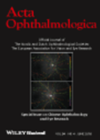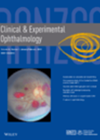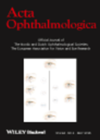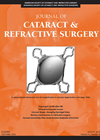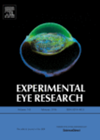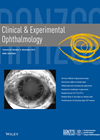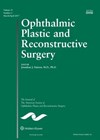You searched for "elective"
Results of STENTube for lacrimal intubation
The STENTube is designed with a varied diameter – a thin central segment with a diameter of 0.86mm and distal tube segments with larger 1.3mm diameter. The thin central segment is exposed at the medial canthus. The distal tubes tamponade...Systemic fungal infections and corneal transplants
This prospective study looked at corneal donors with positive medical history of systemic fungal infection (oral thrush or respiratory, urine, wound, sputum, bronchial, tracheal, or throat culture positive for fungus), to establish if the risk of post-keratoplasty fungal eye infections...Combined ranibizumab and ablative therapy for Coat’s disease
1 October 2016
| Bheemanagouda Patil
|
EYE - Vitreo-Retinal
The aim of this study was to observe the efficacy of intravitreal ranibizumab (IVR) combined with laser photocoagulation or cryotherapy, for Coats’ disease. Patients younger than 16 years of age who were diagnosed with Coats’ disease were included in this...
Conventional vs. accelerated cross-linking
1 August 2016
| Anjali Gupta
|
EYE - Cornea, EYE - General
|
accelerated corneal collagen cross-linking, corneal collagen cross-linking, keratoconus
The Dresden protocol of 3mW/cm2 irradiance for 30 minutes has been extensively studied and has shown advantageous clinical and topographical results. However, this protocol is time-consuming and therefore accelerated CXL using higher irradiance to shorten treatment duration has emerged. The...
Maintenance therapy for CMV endotheliitis
Cytomegalovirus (CMV) has been associated with corneal endotheliitis, leading to endothelial cell loss and corneal decompensation. CMV corneal endotheliitis recurrence can affect between 5-60% of eyes after cessation of anti-CMV therapy. Each recurrence of endotheliitis has a detrimental effect on...Outcomes of primary and repeat DSAEKs
Retrospective analysis of results following primary and secondary descemet stripping automated endothelial keratoplasty (DSAEKs), carried out in Villa Serena-Villa Igea Private Hospitals in Italy, showed that primary and secondary DSAEK surgery result in similar visual outcomes, refractive errors and endothelial...Update on primary angle closure glaucoma
1 June 2016
| Bheemanagouda Patil
|
EYE - Glaucoma
This review article considers primary angle-closure glaucoma which is responsible for half of glaucoma-related blindness worldwide. Angle closure is characterised by appositional contact between the iris and trabecular meshwork. It tends to develop in eyes with shallow anterior chambers, anteriorly...
Implantation of diffractive trifocal intraocular lens
This study reports on 60 eyes of 120 patients who underwent routine cataract surgery followed by implantation of the trifocal IOL model Lisa tri-839MP. This is a diffractive trifocal preloaded IOL with no interruption at the haptic-optic junction, 360 degrees...Resveratrol protects against steroid induced intraocular pressure
1 April 2016
| Graham Wallace
|
EYE - General
|
Glaucoma, Intraocular pressure, Resveratrol, Retina, Steroid-induced, Trabecular meshwork
Topical and systemic steroid delivery is a very effective treatment for many ocular conditions but is compromised by raised intraocular pressure which in turn leads to death of retinal ganglion cells and irreversible blindness. This is an important consideration with...
Aflibercept for the treatment of neovascular glaucoma
1 April 2016
| Anjali Gupta
|
EYE - Glaucoma
The aim of this study was to investigate initial results regarding the treatment of neovascular glaucoma (NVG) with intravitreal aflibercept. NVG is classified into stages 0-3. In stages 1 and 2, abnormal vessel proliferation is seen with or without elevated...
Myopathic ptosis and lower lid retraction surgery
This is a description of a surgical technique which simultaneously addresses both the upper lid ptosis and lower lid retraction in patients with moderate to severe myopathic ptosis. The procedure was performed on 16 eyes of nine patients and involved...PD-1 and retinal ganglion cell death
1 February 2016
| Graham Wallace
|
Apoptosis, Large retinal ganglion cells, Neuroprotection, Optic nerve crush, Programmed cell death-1
Death of retinal ganglion cells (RGC) in conditions like glaucoma leads to permanent visual loss. RGC death can be due to the initial stress such as raised intraocular pressure or secondary to mechanism such as oxidative stress. Programmed cell death-1...



